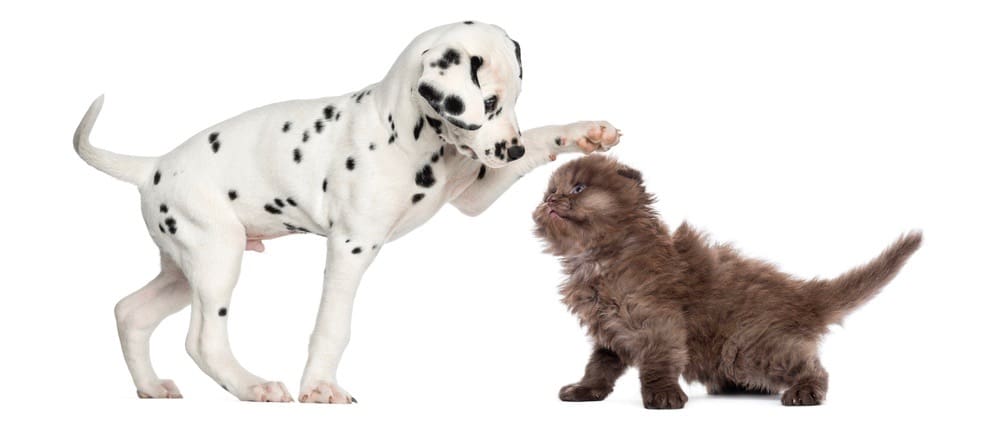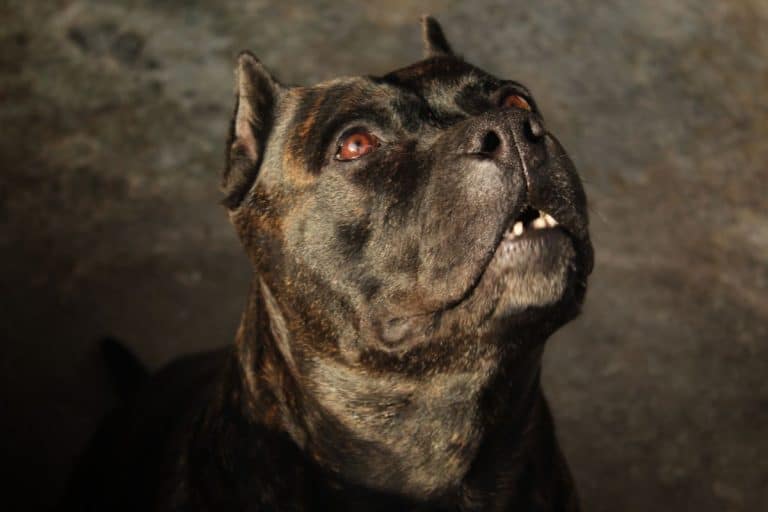Dalmatian Growth Chart – Weight & Size Chart
The Dalmatian is a beautifully spotted, muscular dog with a loving personality. They excel in playing interactive games and enjoy the company of people. But how big do they get when they are fully grown?
Typically, Dalmatians reach their adult size at the age of 16 months. They will weigh between 36 and 71 pounds and stand between 19 and 23 inches on their shoulders.
This article will provide more information on a Dalmatian growth chart and what to expect throughout their stages of growth.
You will also learn their life expectancy, common health problems, and factors that can affect their growth.
When Is A Dalmatian Full Grown?
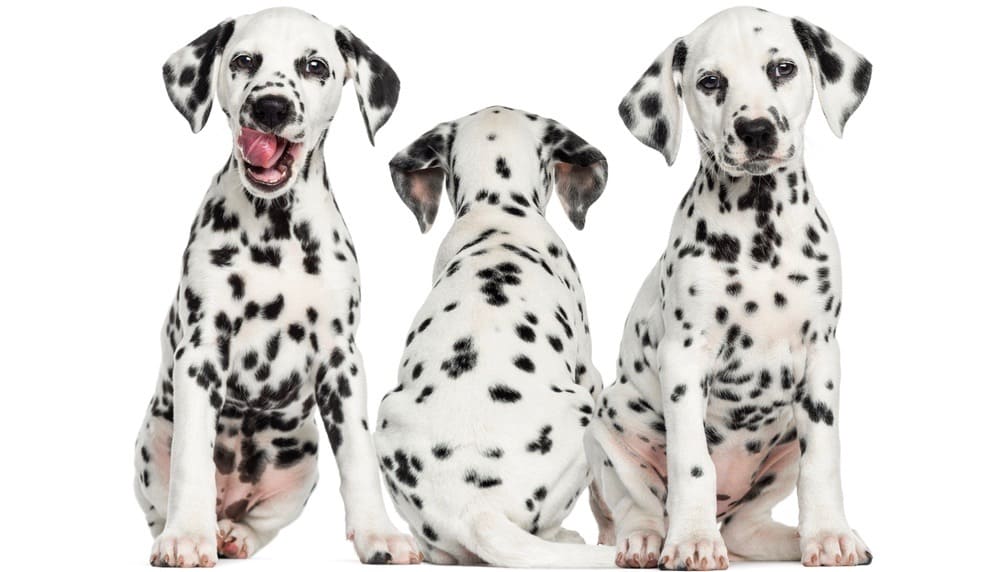
While people take more years to develop and grow, dogs achieve their physical maturity faster by going through a dramatic growth spurt in their early months of life.
Typically, Dalmatians achieve their adult size when they reach the age of 16 months. However, some may be fully grown sooner while others later than the 16-month mark.
From a physical perspective, Dalmatians develop faster but they take a bit longer to grow behaviorally and mentally.
Dalmatians are mentally mature between the ages of 2 and 2 ½ years. For example, when your puppy is urinating, they will lift their hind leg instead of squatting when they are mature.
Dalmatian Weight Chart
The weight of Dalmatians is majorly influenced by lifestyle factors such as exercise and diet.
Therefore, it is necessary to feed your puppy an appropriate diet and give them the right serving sizes to ensure that they maintain a healthy weight. Generally, male Dalmatians weigh more than female Dalmatians.
At 3 months, female Dalmatians should weigh between 14 and 21 pounds. They will weigh around 24 and 38 pounds when they are 6 months old and weigh between 34 and 50 pounds when they reach the age of 1 year.
On the other hand, male Dalmatians weigh between 14 and 26 pounds when they are 3 months old. They weigh between 25 and 49 pounds at 6 months old and weigh around 34 and 67 pounds at 1 year old.
The Dalmatian weight chart will help you to monitor your puppy’s weight to ensure that they are in the right weight category throughout their life.
If your puppy is way above or below the average weight for their age, take them to the vet because there could be underlying health issues causing changes in their weight.
Dalmatian Puppy Weight Chart
| Age | Weight in lbs | Weight in kg |
|---|---|---|
| 3 Months | 14 - 26 lbs | 6.4 - 11.8 kg |
| 4 Months | 17 - 35 lbs | 7.7 - 15.9 kg |
| 5 months | 22 - 41 lbs | 10 - 18.5 kg |
| 6 months | 25 - 49 lbs | 11.3 - 22.2 kg |
| 7 months | 26 - 55 lbs | 11.8 - 25 kg |
| 8 months | 29 - 57 lbs | 13.2 - 25.8 kg |
| 9 Months | 30 - 61 lbs | 13.6 - 27.6 kg |
| 10 Months | 32 - 63 lbs | 14.5 - 28.5 kg |
| 11 Months | 33 - 65 lbs | 15 - 29.5 kg |
| 12 Months | 34 - 67 lbs | 15.5 - 30 kg |
| 13 Months | 35 - 68 lbs | 15.8 - 30.8 kg |
| 14 Months | 36 - 70 lbs | 16.3 - 31.8 kg |
| 15 Months | 36 - 70 lbs | 16.3 - 31.8 kg |
| 16 Months | 37 - 71 lbs | 16.8 - 32.2 kg |
Dalmatian Growth – What to Expect
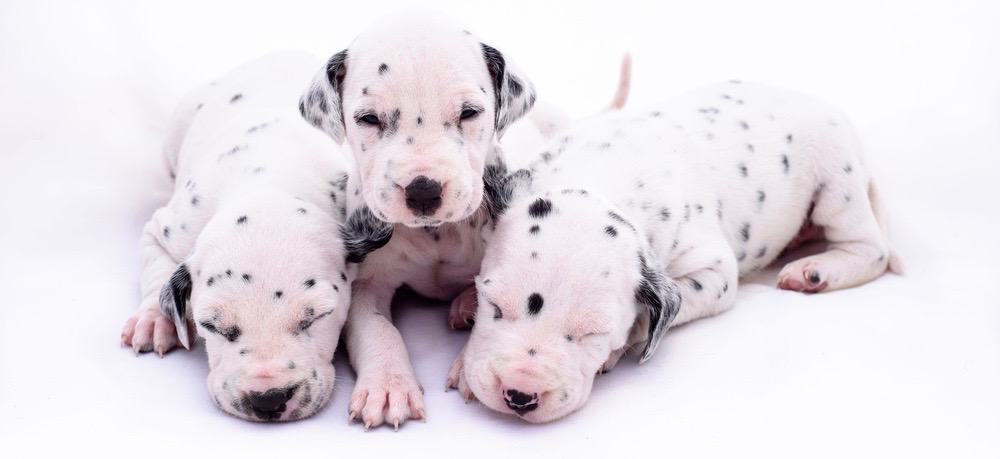
Birth – 2 Weeks
This is the neonatal stage of a puppy’s growth where they are completely helpless and depend fully on their mother.
They spend most of their time eating and sleeping. During the first week, they cannot see or hear because their eyes and ears are closed.
During the second week, they start opening their eyes but cannot see clearly. At this stage, the puppy feeds fully on the mother’s milk or a commercial equivalent if the mother is not present.
3 Weeks – 12 Weeks
At 3 weeks, the puppy can sit, stand, and even walk. Their ears open and they can now respond to sounds around them. They will start responding to movement and light because their vision improves.
This is the socialization stage, and you must introduce them to other dogs and people as well as new environments. At 8 weeks, their brain can take up information making it the right time to start training them.
4 Months – 9 Months
At 4 months, your Dalmatian will experience chewing and teething issues as their baby teeth are starting to fall.
They will reach their sexual maturity at 6 months making it a good time to spay or neuter them. The female Dalmatian can start having puppies.
At 7 months, milk teeth will be replaced by adult teeth and your puppy’s brain is fully developed. Your puppy is now ready for impact activities such as jogging and agility because their growth plates are closed.
10 Months – 18 Months
During this stage, your puppy now understands what being in a pack means, both in dogs and humans.
Their behavior will be hugely affected by those in their group. They will start exploring their role and dominance in the group.
At this stage, they are ready for strenuous activities, and their curiosity increases.
Regular training is important at this stage because they have extra energy. To improve their self-esteem, they need lots of rewards and praise.

Adult
From 18 months, Dalmatians have achieved their physical, sexual, and mental maturity. However, these aspects of growth are not achieved at the same time.
An adult and mature Dalmatian is more self-controlled and much calmer than their challenging and energetic adolescent self.
How Big Will My Dalmatian Puppy Get?
Most Dalmatian owners ask how big their puppies will be when they are fully grown.
Dalmatians reach their height potential when they are 16 months old and will be between 19 and 23 inches at the withers. They will also weigh around 36 and 71 pounds at 16 months.
Dalmatians’ frame and height are greatly reliant on genetics. To know how big your puppy will get, it is recommended that you look at their parents.
This is because most puppies end up becoming the size of their parents when they are adults if you provide them with optimal conditions for healthy growth and development.
Factors That Affect Dalmatian Growth
Genetics & Gender
Generally, genetics and gender do not negatively affect the size of Dalmatians when they are fully grown.
If your Dalmatian had larger parents, then they are likely to be bigger. If your Dalmatian comes from parents who are smaller in size, there is a higher chance that they will be small when they are fully grown.
Female Dalmatians are generally lighter, smaller, and less strong than male Dalmatians.
To ensure that your puppy attains their full growth potential, feed them nutritional food, and give them the exercise they need.
Nutrition
Nutrition plays an important role in the growth of Dalmatians. Feeding your puppy nutritionally complete and balanced food will ensure that they have a healthy development throughout their growth stages.
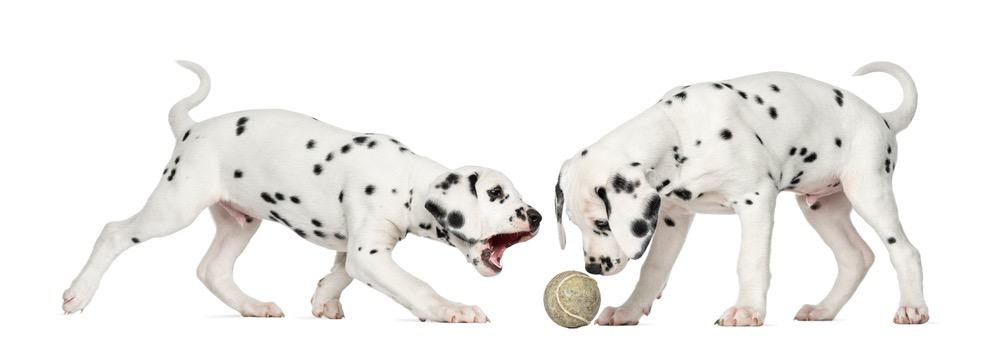
If you notice that your puppy requires more calories, ensure that they are from healthy foods and not treats.
Feed your Dalmatian top-quality food designed for puppies when they are young, this will satisfy all their nutritional needs and help support their health in the future.
Physical Activity & Health
Being energetic dogs, Dalmatians require a lot of exercises to keep active and fit. They are always ready to play because they are curious about nature.
Apart from giving your puppy their exercise, playtime is also important because it allows you and your puppy to bond.
Ensure that you do not do rigorous activities or over-exercise your Dalmatians when they are young because their growth platelets can be damaged and harmed. This can lead to stunted growth.
What If My Dalmatian Is Not the Right Weight?
Is your Dalmatian overweight or underweight? Ensuring that your puppy is the right weight is very crucial for their health.
If your Dalmatian is overweight, increasing their activity level and lowering their caloric intake will help them to lose weight.
Also, take your Dalmatian to the vet so that they can help you to come up with a routine to help them lose weight.
If your Dalmatian is smaller than the average size, they could be genetically small, have poor eating habits, do too much exercise or have health conditions.
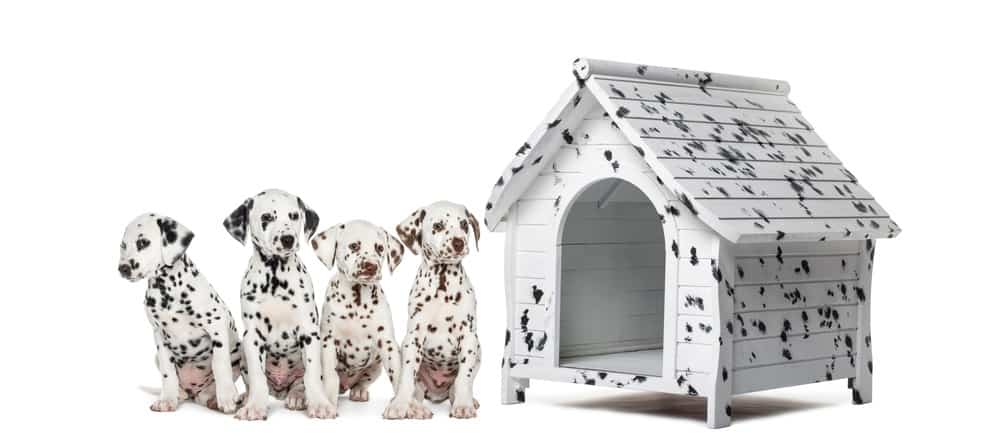
Feeding them food from quality brands, sticking to a feeding schedule, and exercising them for 5 minutes a day per month of their age will help them gain and maintain a healthy weight.
However, if your Dalmatian is underweight because of an underlying health condition, visits to the vet will help with diagnosis and treatment.
What Is The Life Expectancy of Dalmatians?
On average, Dalmatians have a lifespan of between 10 and 13 years. Because they are a medium-sized breed, Dalmatians live for fewer years than smaller breeds like Chihuahua and more years than larger breeds like German Shepherds.
Dalmatians’ life expectancy is affected by several factors including exercise, diet, and health issues.
However, you can help your Dalmatian to live a long and happy life by giving them the exercise they need, a healthy and balanced diet as well as deep companionship, and immense care.
Regular visits to the vet will also help identify any underlying health problems that may shorten their lives.
How Much Does It Cost to Own a Dalmatian?
Being an ‘elite’ breed of dog, Dalmatians are quite expensive. On average, the price of owning a Dalmatian is around $800.
Rescuing or adopting a Dalmatian puppy is a better way to save on the initial cost of ownership. Because of their superior lineage, purebred Dalmatians are more expensive to buy.
Apart from the initial cost, there are other costs of owning a Dalmatian including the health care expenses, grooming, and training costs.
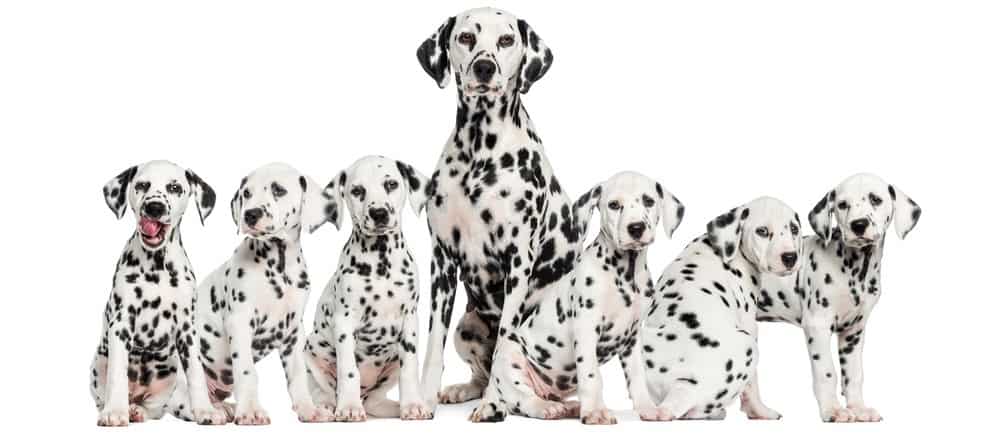
Since Dalmatians can be affected by genetic health problems such as urinary stones and deafness, it is important to set aside money for vet visits.
A grooming session costs in the range from $30 and $90 if you choose to get a groomer.
However, if you groom your puppy yourself, you need to buy grooming tools such as nail clippers, hairbrushes, and shampoos. On average, training your Dalmatian in a group setting can cost you between $30 to $50 per class.
Dalmatian Genetics and Common Health Problems
Like other pure breeds of dogs, Dalmatians are genetically predisposed to certain health problems.
Knowing these problems as a Dalmatian owner will help you recognize any early signs for early diagnosis and treatment. The following are the common health problems that affect Dalmatians as a breed:
Deafness
Deafness is the most common problem with this breed and a high percentage of Dalmatians have hearing problems to a certain degree.
To assess whether your puppy is affected, your vet will do a Brainstem Auditory Evoked Response (BAER) test. Most Dalmatians live happy and long lives even though they are deaf.
Hyperuricemia
This condition occurs when the uric acid build-up to a point of causing kidney stones and gout in Dalmatians.
To minimize the risk of your puppy developing this condition, ensure that they drink a lot of water to urinate more and eat food with lower levels of purine.
Hip Dysplasia
This condition is caused by the abnormal development of joints which affects the hips of your Dalmatian.
Final Words
For your Dalmatian to reach their full size, you should provide them with the right nutrition, veterinary care, enough exercise, and plenty of sleep.
Dalmatians can be overwhelming to care for but with love, care, and attention, they will grow to be healthy and happy dogs in the future.
Hopefully, this article has given you the information you need to help your Dalmatian achieve their growth potential.

